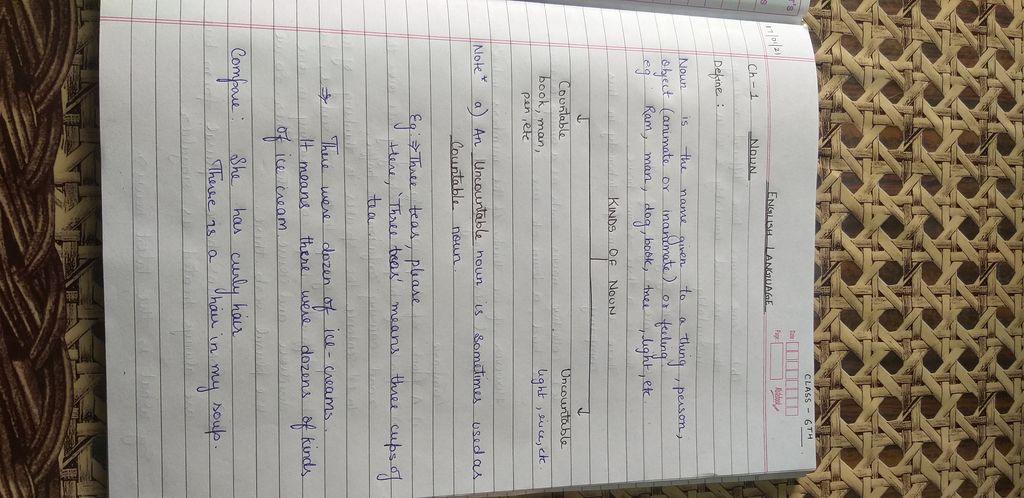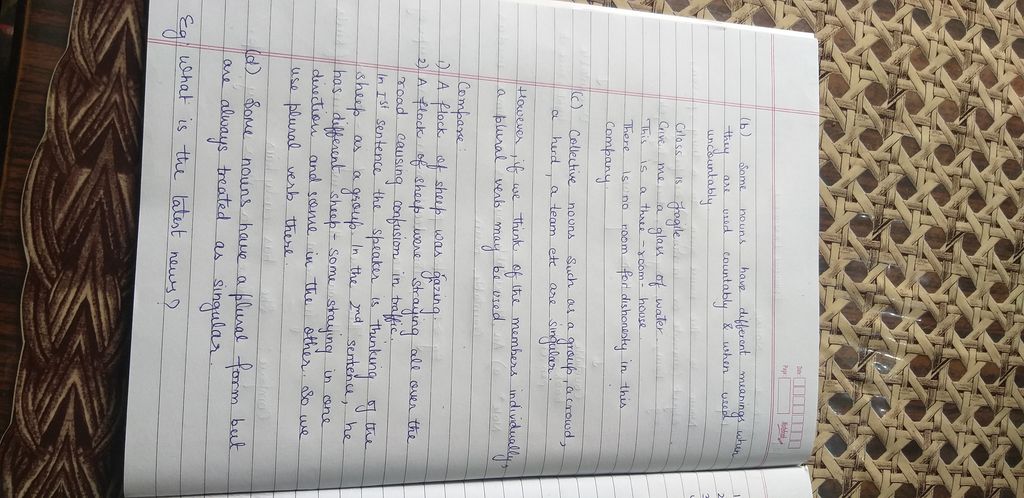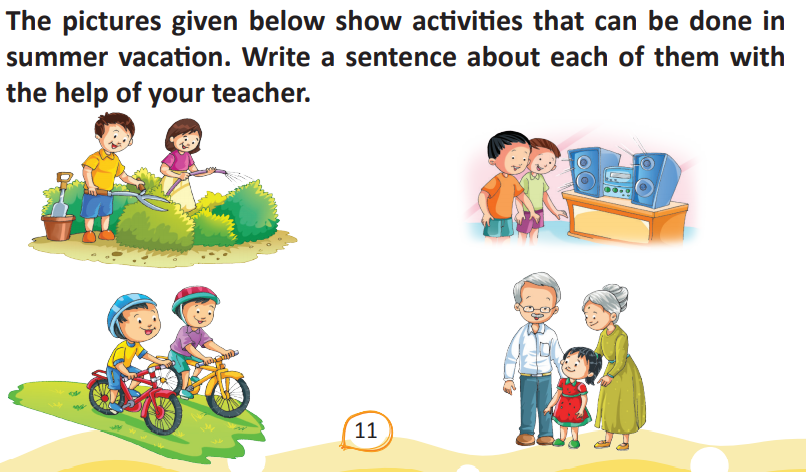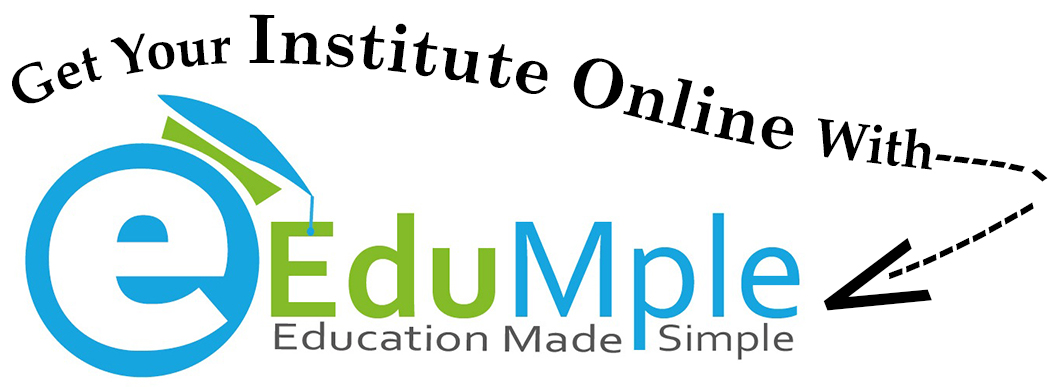Noun
 Noun Notes.
Noun Notes.
 Read the notes carefully. Tomorrow exercises will be uploaded.
Read the notes carefully. Tomorrow exercises will be uploaded.
There are some more kinds of noun ,they are as follows:
Common Noun : Is a noun given in common to every person or thing of the same class or kind. ( common here means shared by all).
Proper Noun : Is the noun of some particular person or place.( proper means ones's own. Hence a Proper Name is a person's own name).
Abstract Noun: Is usually the name of a quality, action, or state considered apart from the object to which it belongs; as.
Quality- goodness, kindness, darkness, honesty, wisdom, bravery , etc.
Action- laughter, theft, movement, judgement, hatred, etc.
State- Childhood , boyhood , youth, slavery, sickness, poverty, etc.
Noun
1. If y(t) is a solution of ![]() and y(0) = –1. Then y(1) is equal to (2003, 1M)
and y(0) = –1. Then y(1) is equal to (2003, 1M)
a![]() b
b ![]() c
c ![]() d
d

Punctuations
FULL STOP OR PERIOD 1. It represents the longest pause. It is used at the end of each assertive and imperative sentence. I write a letter. (assertive) Please, post this letter. (imperative) A full stop indicates that the idea expressed in the sentence is complete and does not go further. 2. To mark abbreviations and initials, as, (B.A., LL.B., M.P., M.A., M.B.B.S., Dr. R.P. Sharma, Mr. L.L. Chauhan) (a) It requires a comma after an abbreviation.
Prepositions
Prepositions
Prepositions are short words (on, in, to) that usually stand in front of nouns (sometimes also in front of gerund verbs).
Even advanced learners of English find prepositions difficult, as a 1:1 translation is usually not possible. One preposition in your native language might have several translations depending on the situation.
There are hardly any rules as to when to use which preposition. The only way to learn prepositions is looking them up in a dictionary, reading a lot in English (literature) and learning useful phrases off by heart (study tips).
The following table contains rules for some of the most frequently used prepositions in English:
Prepositions – Time
English Usage Example
on
days of the week
on Monday
in
months / seasons
time of day
year
after a certain period of time (when?)
in August / in winter
in the morning
in 2006
in an hour
at
for night
for weekend
a certain point of time (when?)
at night
at the weekend
at half past nine
since
from a certain point of time (past till now)
since 1980
for
over a certain period of time (past till now)
for 2 years
ago
a certain time in the past
2 years ago
before
earlier than a certain point of time
before 2004
to
telling the time
ten to six (5:50)
past
telling the time
ten past six (6:10)
to / till / until
marking the beginning and end of a period of time
from Monday to/till Friday
till / until
in the sense of how long something is going to last
He is on holiday until Friday.
by
in the sense of at the latest
up to a certain time
I will be back by 6 o’clock.
By 11 o'clock, I had read five pages.
Prepositions – Place (Position and Direction)
English Usage Example
in
room, building, street, town, country
book, paper etc.
car, taxi
picture, world
in the kitchen, in London
in the book
in the car, in a taxi
in the picture, in the world
at
meaning next to, by an object
for table
for events
place where you are to do something typical (watch a film, study, work)
at the door, at the station
at the table
at a concert, at the party
at the cinema, at school, at work
on
attached
for a place with a river
being on a surface
for a certain side (left, right)
for a floor in a house
for public transport
for television, radio
the picture on the wall
London lies on the Thames.
on the table
on the left
on the first floor
on the bus, on a plane
on TV, on the radio
by, next to, beside
left or right of somebody or something
Jane is standing by / next to / beside the car.
under
on the ground, lower than (or covered by) something else
the bag is under the table
below
lower than something else but above ground
the fish are below the surface
over
covered by something else
meaning more than
getting to the other side (also across)
overcoming an obstacle
put a jacket over your shirt
over 16 years of age
walk over the bridge
climb over the wall
above
higher than something else, but not directly over it
a path above the lake
across
getting to the other side (also over)
getting to the other side
walk across the bridge
swim across the lake
through
something with limits on top, bottom and the sides
drive through the tunnel
to
movement to person or building
movement to a place or country
for bed
go to the cinema
go to London / Ireland
go to bed
into
enter a room / a building
go into the kitchen / the house
towards
movement in the direction of something (but not directly to it)
go 5 steps towards the house
onto
movement to the top of something
jump onto the table
from
in the sense of where from
a flower from the garden
Other important Prepositions
English Usage Example
from
who gave it
a present from Jane
of
who/what does it belong to
what does it show
a page of the book
the picture of a palace
by
who made it
a book by Mark Twain
on
walking or riding on horseback
entering a public transport vehicle
on foot, on horseback
get on the bus
in
entering a car / Taxi
get in the car
off
leaving a public transport vehicle
get off the train
out of
leaving a car / Taxi
get out of the taxi
by
rise or fall of something
travelling (other than walking or horseriding)
prices have risen by 10 percent
by car, by bus
at
for age
she learned Russian at 45
about
for topics, meaning what about
we were talking about you
Adverbs
What is an adverb?
An adverb is a word that modifies (describes) a verb (he sings loudly), an adjective (very tall), another adverb (ended too quickly), or even a whole sentence (Fortunately, I had brought an umbrella). Adverbs often end in -ly, but some (such as fast) look exactly the same as their adjective counterparts.
Tom Longboat did not run badly.
Tom is very tall.
The race finished too quickly.
Fortunately, Lucy recorded Tom’s win.
It’s easy to identify adverbs in these sentences.
Adjectives
Adjectives
Adjectives are words that describe nouns (or pronouns). "Old," "green," and "cheerful" are examples of adjectives. (It might be useful to think of adjectives as "describing words.")
This infographic shows where an adjective sits in relation to the noun it describes:

Examples of Adjectives
Here are some examples of adjectives. (In each example, the adjective is highlighted.)
Adjective Before the Noun
An adjective usually comes directly before the noun it describes (or "modifies," as grammarians say).
- old man
- green coat
- cheerful one
- ("One" is a pronoun. Don't forget that adjectives modify pronouns too.)
When adjectives are used like this, they're called attributive adjectives.
Adjective After the Noun
An adjective can come after the noun.
- Jack was old.
- It looks green.
- He seems cheerful.
In the three examples above, the adjectives follow linking verbs ("was," "looks," and "seems") to describe the noun or pronoun. (When adjectives are used like this, they're called predicative adjectives.)
Adjective Immediately After the Noun
Sometimes, an adjective comes immediately after a noun.
- the Princess Royal
- time immemorial
- body beautiful
- the best seats available
- the worst manners imaginable
When adjectives are used like this, they're called postpositive adjectives. Postpositive adjectives are more common with pronouns.
- someone interesting
- those present
- something evil
Pronoun
What is a pronoun?
A pronoun is a word that is used instead of a noun or noun phrase. Pronouns refer to either a noun that has already been mentioned or to a noun that does not need to be named specifically.
The most common pronouns are the personal pronouns, which refer to the person or people speaking or writing (first person), the person or people being spoken to (second person), or other people or things (third person). Like nouns, personal pronouns can function as either the subject of a verb or the object of a verb or preposition: "She likes him, but he loves her." Most of the personal pronouns have different subject and object forms:

There are a number of other types of pronouns. The interrogative pronouns—particularly what, which, who, whom, and whose—introduce questions for which a noun is the answer, as in "Which do you prefer?"
Possessive pronouns refer to things or people that belong to someone. The main possessive pronouns are mine, yours, his, hers, its, ours, and theirs.
The four demonstrative pronouns—this, that, these, and those—distinguish the person or thing being referred to from other people or things; they are identical to the demonstrative adjectives.
Relative pronouns introduce a subordinate clause, a part of a sentence that includes a subject and verb but does not form a sentence by itself. The main relative pronouns are that, which, who, whom, what, and whose.
Reflexive pronouns refer back to the subject of a sentence or clause and are formed by adding -self or -selves to a personal pronoun or possessive adjective, as in myself, herself, ourselves, and itself.
Indefinite pronouns, such as everybody, either, none, and something, do not refer to a specific person or thing, and typically refer to an unidentified or unfamiliar person or thing.
The words it and there can also be used like pronouns when the rules of grammar require a subject but no noun is actually being referred to. Both are usually used at the beginning of a sentence or clause, as in "It was almost noon" and "There is some cake left." These are sometimes referred to as expletives.

 Izram
Izram
 Got it? Take a quick test.
Got it? Take a quick test.